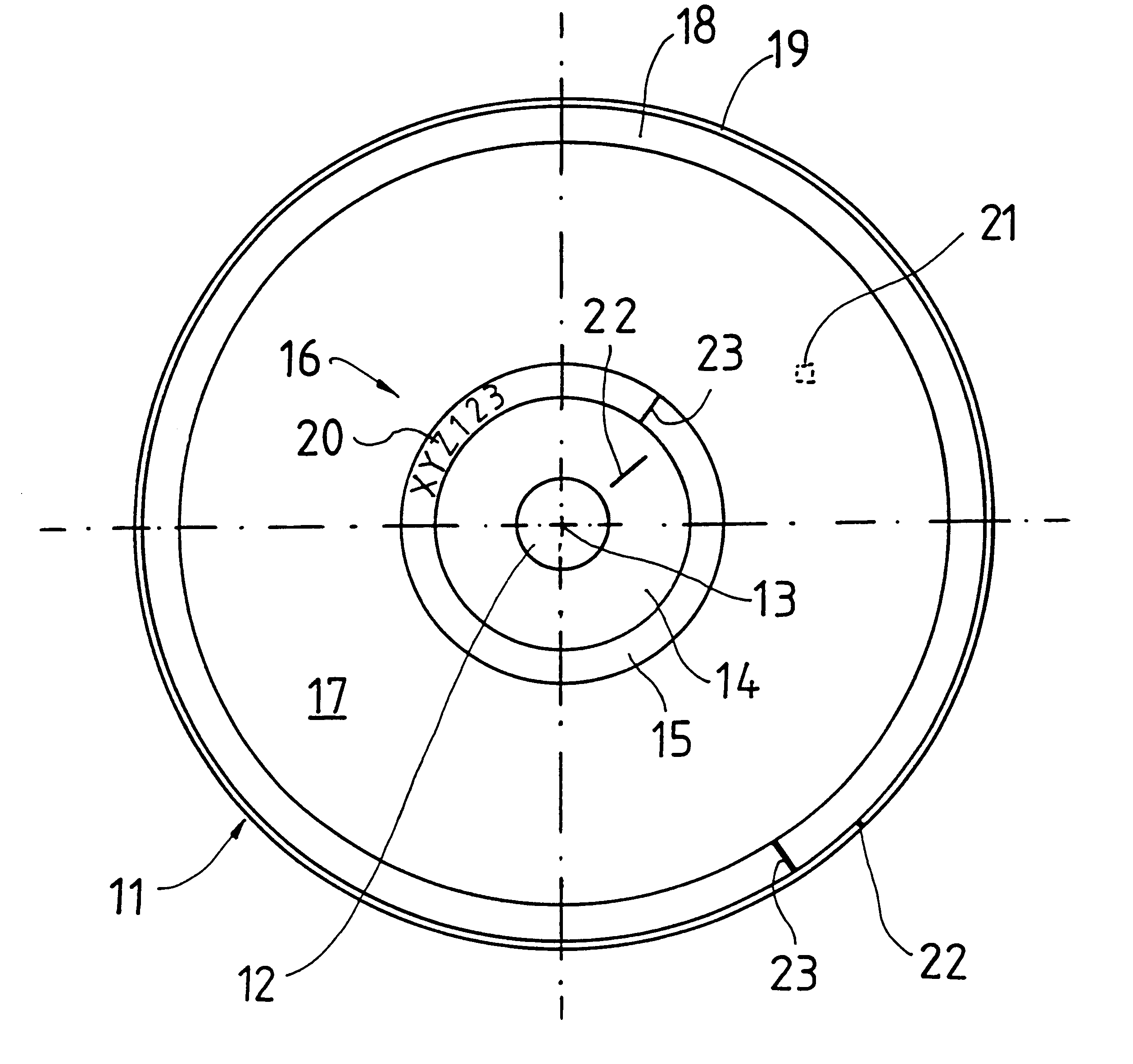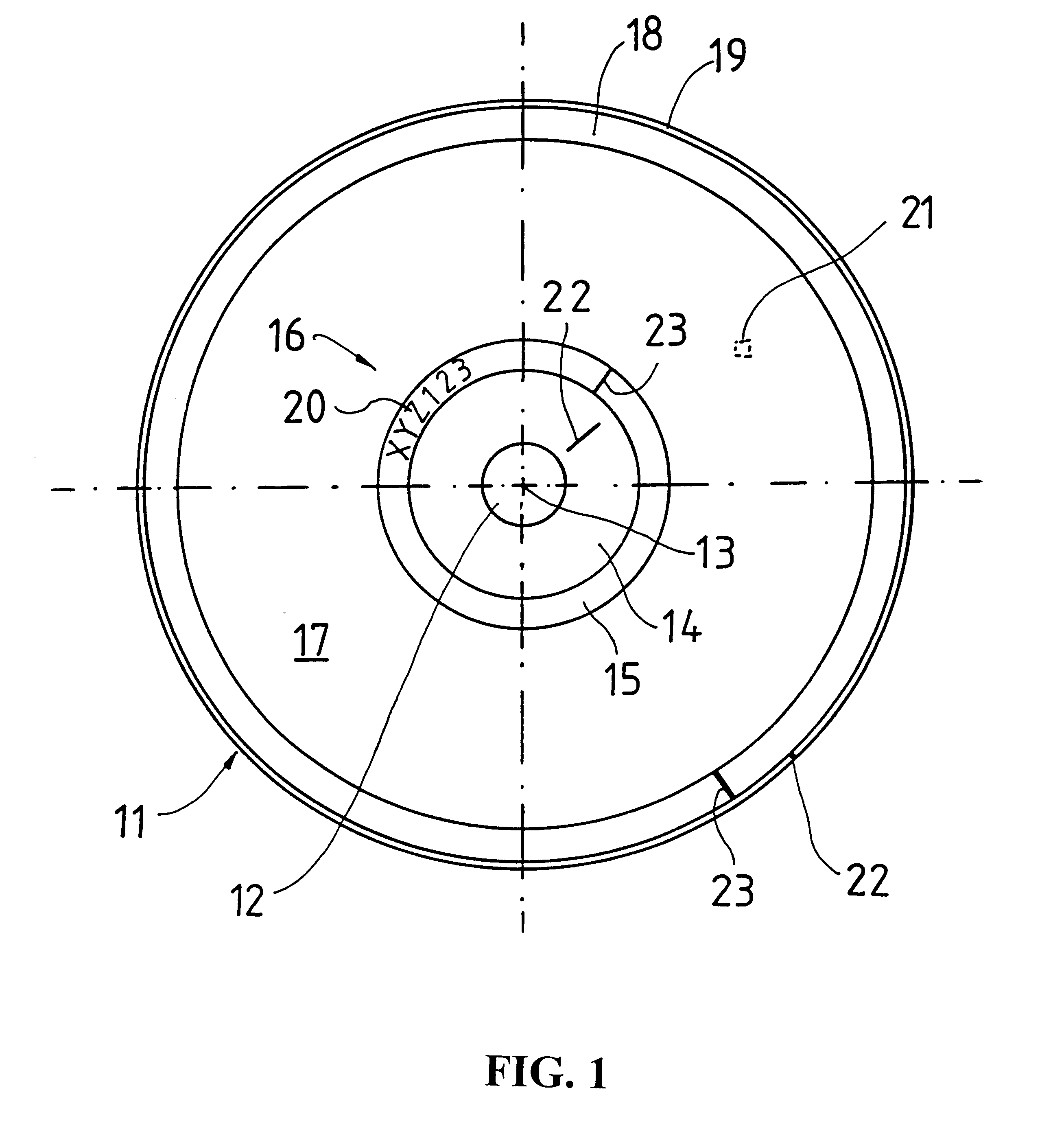Method for examining rotationally symmetrical objects
- Summary
- Abstract
- Description
- Claims
- Application Information
AI Technical Summary
Benefits of technology
Problems solved by technology
Method used
Image
Examples
Embodiment Construction
The Compact Disk (CD) 11 shown in the figure is conventionally realized in the form of a circular disk with a central hole 12. This means that the CD is entirely symmetrical in reference to the rotational axis 13. The central hole 12 is usually bordered by an inner coaxial edge region 14 for holding the CD in the corresponding player. A coaxial region 15 that contains the identification code, namely the ID code 16, is situated adjacent to the aforementioned edge region. This coaxial region 15 is surrounded by the data area 17. Depending on the data quantity, a lead-out 18 or the outer edge region 19 is situated adjacent to the data area.
It is quite apparent that such a CD, in particular, the data area 17, always appears identical to an optical scanning element of an examination device independently of the rotation if no additional measures are provided. This is the reason why defects which, for example, always occur at the same position referred to the radial distance and the angula...
PUM
 Login to View More
Login to View More Abstract
Description
Claims
Application Information
 Login to View More
Login to View More - R&D
- Intellectual Property
- Life Sciences
- Materials
- Tech Scout
- Unparalleled Data Quality
- Higher Quality Content
- 60% Fewer Hallucinations
Browse by: Latest US Patents, China's latest patents, Technical Efficacy Thesaurus, Application Domain, Technology Topic, Popular Technical Reports.
© 2025 PatSnap. All rights reserved.Legal|Privacy policy|Modern Slavery Act Transparency Statement|Sitemap|About US| Contact US: help@patsnap.com


